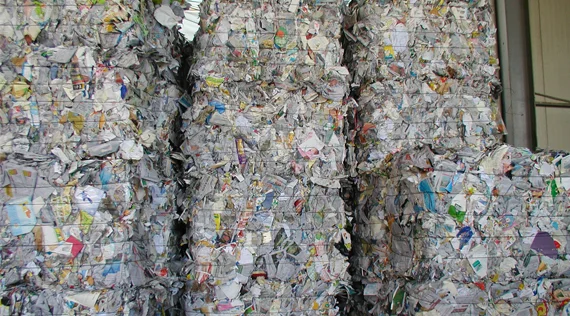
SEATTLE (Waste Advantage): Company recycling commitments and governmental bans are on the rise, even as China’s ban on U.S. recycled materials continues to reverberate across the industry. This pivotal moment of crisis and opportunity is a chance to reimagine and rebuild the U.S. recycling industry. As Nina Goodrich, director of the Sustainable Packaging Coalition, said in her keynote address at the recent SPC Advance conference: “We need to take the opportunity of the wakeup call from China to build the infrastructure that’s going to manage the materials of the future and not get caught flat-footed by looking to the past.”
“Brands need to think about the entire system and engage the value chain, taking a leadership role on the design and innovation side but also playing a significant role in reimagining how this stuff gets through the system,” said Bridget Croke, vice president of external affairs, Closed Loop Partners.
Which companies are offering models — or at least experiments — that are worth emulation? Below are three examples of cutting-edge collaborations, where companies are driving innovation and working to modernize the U.S. recycling infrastructure.
Starbucks Pilots Cup-to-Cup Closed Loop Recycling
By collaborating with its business and supply chain partners, including two paper mills and a cup manufacturer, Starbucks successfully has demonstrated that not only could multilayered cup liners be cost-effectively removed, but that a closed loop, zero-waste solution was possible. Speaking at SPC Advance, Rebecca Zimmer, global director of environment for Starbucks, said that the closed loop initiative shows how “great things can happen when partnerships are formed that don’t typically work together, and you’re innovative about your working relationships.”
When Zimmer discovered last year that the company had 18 truckloads — or 25 million cups — of excessive inventory destined for landfills, she used that revelation to introduce a closed loop cup recovery system, partnering with a paper mill known for its ability to process poly-coated paper into food grade product, Sustana. Other partners included a second paper mill, Westrock, and a cup manufacturer, Seda.
Ultimately, Starbucks wants to develop a cup that is both recyclable and compostable because many countries have zero recycling infrastructure and composting is a better option, Zimmer said. But working with U.S. partners to build its recycling capacity remains a priority. “Our cups are not going to be recyclable until all cups, hot and cold, can be recycled and put into the system. We can’t do this alone,” she said.
A New Recycling Process for Flexible Plastic Packaging
Flexible plastic packaging (FPP) is the fastest growing type of packaging in the United States, and no wonder. The stand-up pouches, flexible bags and wraps that crowd supermarket shelves are lightweight, malleable and durable. They extend the shelf life of food products, consumers like them and they’re less wasteful to produce.
Until recently, it wasn’t possible to recycle the material in the U.S. recycling system. The recovery infrastructure wasn’t designed to handle it, and that means that some 12 billion pounds of FPP was destined for landfill yearly, according to industry data. A collaborative initiative, led by companies ranging from global plastics producers to consumer goods companies, wants to change that.
Early next year, FPP will be recycled in a pilot at a materials recovery facility (MRF) in Pennsylvania. TotalRecycle will pick up the waste through its curbside recycling program, separate out the material and process it into bales that can be sold to end markets, such as durable goods and building materials.
To recycle the FPP, the MRF installed optical sorters, which were funded by a collaborative, Materials Recovery for the Future (MRFF), a project of the American Chemistry Council. MRFF has conducted research and development (PDF) for years to determine how best to recycle the emergent waste stream, which can gum up existing recycling infrastructure or intermingle with and lessen the value of paper bales.
To scale up, MRFF is exploring additional end uses for FPP bales. But more recycling facilities will need to develop the capacity. Nestle, PepsiCo and the other consumer goods companies participating in the pilot can’t label their packaging as recyclable when one small region of the country is involved. TotalRecycle plans an extensive consumer education program, but research shows that two-thirds of consumers don’t recycle material that’s not labeled as recyclable.
Courtesy: https://wasteadvantage.com
| Copper Scrap View All | |
| Alternator | 0.32 (0.01) |
| #1 Copper Bare Bright | 3.77 (0.07) |
| Aluminum Scrap View All | |
| 356 Aluminum Wheels (Clean) | 0.73 (0.02) |
| 6061 Extrusions | 0.64 (0.02) |
| Steel Scrap View All | |
| #1 Bundle | 475.00 (0) |
| #1 Busheling | 495.00 (0) |
| Electronics Scrap View All | |